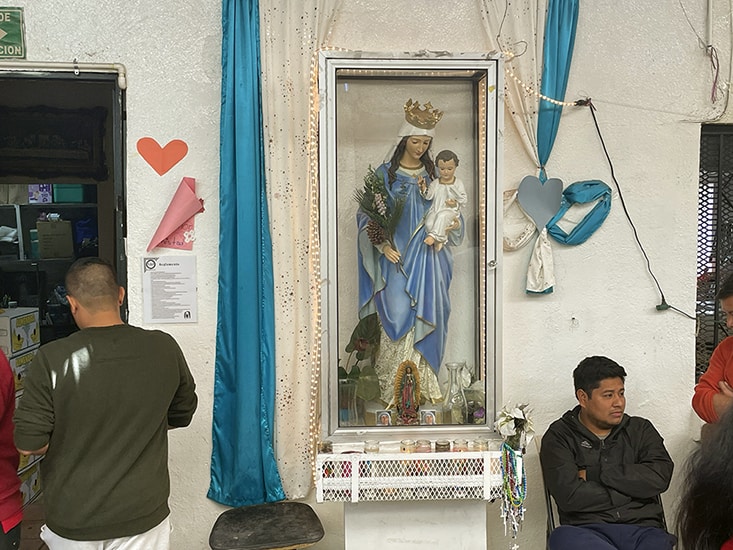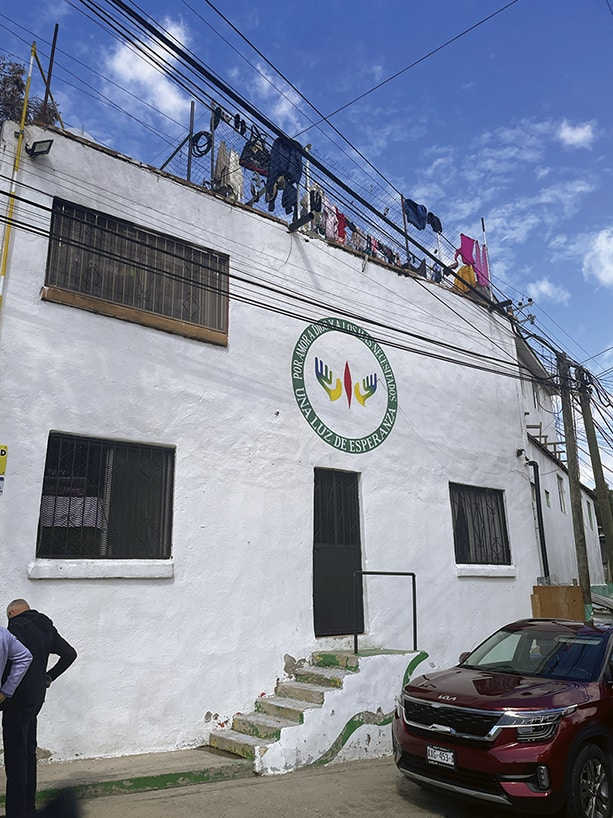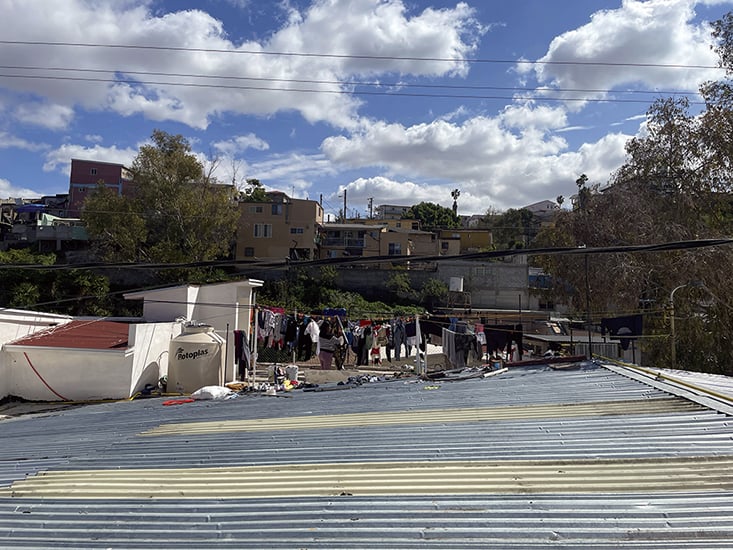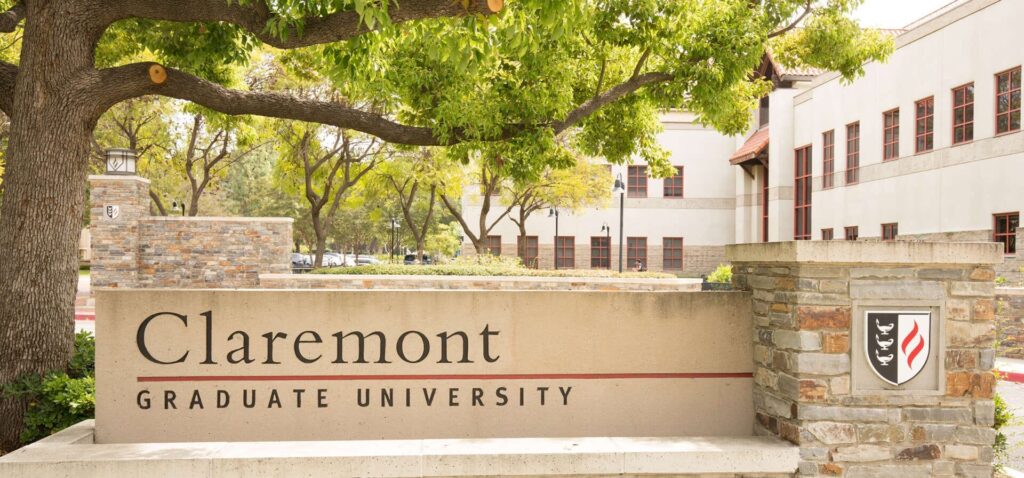A border story, part I: in plain sight

by Mick Rhodes | editor@claremont-courier.com
Southern Californians are famously fortunate in that with a tank of gas and a few hours to spare, we can see the snow, the desert, the beach, or any number of staggeringly lush or desolate locales.
Equally accessible is the illusory but still bustling border town of Tijuana, just south of our border with Mexico, a two and-a-half hour drive from Claremont. Some things there are unchanged: its downtown strip remains ablaze with brightly lit bars, restaurants and shops.
But leaving the tourist district and climbing up into the foothills through battered streets with car-sized potholes, the view of the city’s superstructure is decidedly less glitzy. Years ago, Tijuana was considered a relatively safe playground for Americans. It is now a very dangerous place. The U.S. Department of State recommends tourists “Reconsider travel due to crime and kidnapping.”
There, in early March at an address we were asked not to divulge, the Courier met a 37-year-old woman from Michoacán we will call “X” to protect her safety and that of her family. X was one of 235 mostly women and children temporarily housed in a wildly crowded but orderly 3,900 square-foot, ramshackle migrant shelter called Por amor a Dios y a los mas necesitados, una luz de esperanza, or “For the love of God and the most needy, a light of hope” that some may be surprised to learn has strong ties to Claremont.

Por amor a Dios y a los mas necesitados, una luz de esperanza, or “For the love of God and the most needy, a light of hope.” a migrant shelter in the foothills of Tijuana, Mexico. Courier photo/Mick Rhodes
X’s journey to the border was precipitated by events difficult to imagine.
Things had been good in Mexico City for X and her 16-year-old daughter. The pair were inseparable. The teen even helped out at her mother’s thriving home hair salon business. X worked hard, and they had a small, tidy place to call home. Their family back home in Michoacán, west of the capital city, was proud.
Friday, July 15, 2022 was a typical summer day in Mexico City, with temperatures in the low 70s, stifling humidity, and thunderstorms. Locals were having their hair styled for the weekend. The salon was bustling.
Asked to describe what happened next, X paused, gathered strength, then spoke.
“We were about to close up, I was finishing up with a few clients, and I didn’t realize a few other people had arrived. Once they arrived they opened fire.”
The flood of grief hit her then, as if remembering had brought a wave that had overtaken the small, windowless office in which we were talking. Gasping for air, her voice rising, it seemed the terror was right there with her, some nine months later.
“Eight bullets hit my daughter. I felt the bullets whizzing by and I didn’t understand what was happening. When I turned around I saw my daughter, the bullet wounds, and how her body was losing life. I asked her not to close her eyes. I didn’t want her to go away.
“I felt like she was saying her goodbyes. She looked at me and it was like she know what was happening. As I was holding her there were still bullets whizzing through the air around her.”
She was pronounced dead at a nearby hospital a short time later.

The altar in the courtyard of Por amor a Dios y a los mas necesitados, una luz de esperanza, or “For the love of God and the most needy, a light of hope,” a migrant shelter in the foothills of Tijuana, Mexico. Courier photo/Mick Rhodes
X said prior to the shooting she was visited by some low-level Mexican drug cartel operatives. They had shaken her down for protection money. She refused.
Nothing has been the same since.
“Seeing her opened up for the autopsy, having to see the bullet wounds …” X recalled, her voice trailing off. “It’s been too much, having to remember, having seen everything, waking up in the middle of the night, and not being able to sleep sometimes, reliving the moments.”
Police barred her from her home as they investigated the crime. In the meantime, she buried her only child.
Days later, when authorities allowed her in, her formerly tidy home and workplace had been robbed, stripped of everything of value, and vandalized. Her first job was to clean her daughter’s blood from the floor.
She knew there would be a price to pay for pursuing prosecution of the gunmen. But, she thought, they took her only child from her, she had nothing left to lose.
“They wanted me to drop the investigation so that a folder is shut and nothing happens,” she said.
Once word reached the cartel that she was pursuing legal action, the inevitable occurred.
“They came back and attacked me once they knew that I had sued,” X recalled. “They came back and tore up the windows. I was locked up in my room.”

The view from the roof of Una Luz de Esperanza (“a light of hope”) a migrant shelter in the foothills of Tijuana, Mexico. Courier photo/Mick Rhodes
She had a terrible choice to make: run or die.
Word had spread to Mexico City about a woman in Tijuana who had a safe place for the ever-growing number of Mexicans fleeing cartel violence and seeking asylum in the United States. Soon X left her home, business, and family behind — likely forever — and made the 1,700-mile journey north to Por amor a Dios y a los mas necesitados, una luz de esperanza, which for the purposes of this story we will call Una Luz de Esperanza.
“There’s no way I can go back to Mexico City,” X said. “It’s too dangerous. And I’m afraid to go back to [her home state of] Michoacán, because the funeral homes have the information and the cartels are so well informed they could find me wherever I went. And my mother is in Michoacán, and she is a very big person in my life and I can’t go back to see her.”
It’s difficult to conceive the level of violence with which everyday Mexicans are confronted in areas where the drug cartels are battling for dominance.
“I want people to know how tough it is living with these kinds of people that don’t care what gender, what age … they don’t care about anything,” X said. “They take lives and not only that, it’s very difficult for the people that are left behind … me, for example. It’s been very traumatizing for me because she was my only daughter, my partner, my purpose to live. They took it away from me. I’ve been medicated. I’ve been to psychologists, psychiatrists. I don’t know what to do.”
In applying for asylum, X said she hoped to be considered for what amounts to a second life, free from inevitable cartel reprisal.
“I want to have as much as a normal life as I can and honor my daughter by having a good life,” X said. “I want her to be able to see how I am living.”
Near the end of our conversation, gunshots rang out on the street below Una Luz de Esperanza. X was seemingly unmoved, but within seconds the courtyard was teeming with children and mothers, and some fathers, all frantic to find one another. We learned later the gunfire was likely connected to a funeral procession that had been passing by. But in the moment, one mother said the unmistakable sound of automatic weaponry and the immediate rush of parents looking for their children brought her back to the cartel violence from which they were all trying to escape.

Residents of the migrant shelter Una Luz de Esperanza (“a light of hope”) in the foothills of Tijuana, Mexico, moments after gunshots rang out on the street below. Courier photo/Mick Rhodes
Mexican drug cartel violence has been a staple of American news coverage for nearly two decades. But seeing the human toll of this deeply entrenched power struggle up close was nonetheless jarring. In a country with so much natural beauty, culture, and history, getting a glimpse at just how much of it is awash in naked corruption, and how United States immigration policy is in some cases making things worse, is profoundly disheartening.
Most of the 235 immigrants at Una Luz de Esperanza in early March were asylum seekers fleeing cartel violence. All were hoping to be chosen in a cruelly random lottery system for the privilege of being allowed to make their cases to U.S. Department of Homeland Security personnel, who will determine if they simply have the right to apply for asylum. Only a handful had been selected over the previous two months.
Asylum-seekers have long been demonized and used as political fodder. Former President Trump famously called them “rapists” and criminals when announcing his candidacy. But the truth on the ground is less polarizing, more human; everyone the Courier talked to in Tijuana was simply yearning to survive.
“I would like for people to get more insight into what’s happening, and to let us be in a safe place, to have a safe life, because we’re working people,” X said. “We’re not trying to get into the U.S. to do bad things. We’re working people. We try to help. We’re not trying to do bad in the U.S. Be open to other people. Don’t close us off so much.”
Next week we will learn about Leticia Herrera, the inspiring, indomitable founder of Una Luz de Esperanza, and how despite tragedy in her own life, she — with the help of a number of Claremont residents — has provided safety, food, shelter, and yes, “a light of hope,” to more than 13,000 people seeking a legal path to a better life.










0 Comments